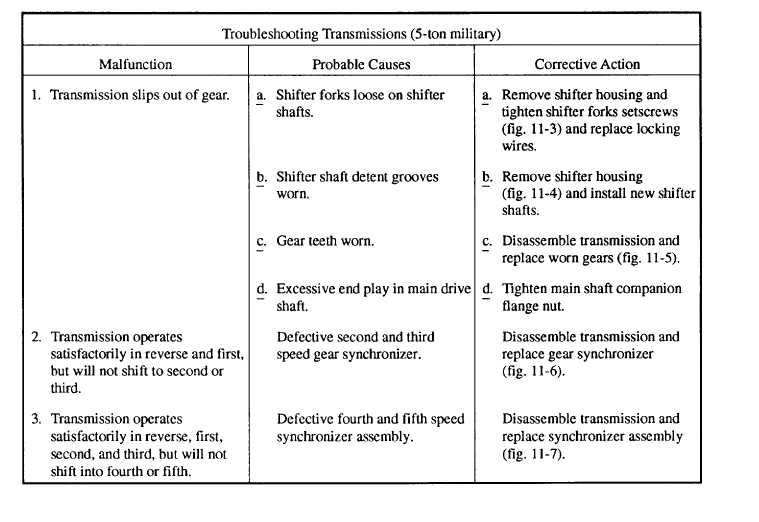6. Worn spring pivot bearings
7. Loose frame or axle U-bolts
8. Engine cooling fan out of balance
9. Engine crankshaft, flywheel, and/or clutch plate out of balance
10. Tires or wheels wobbly or mismatched
This list, along with other troubles you have encountered in your own experience, can be used as a step-by-step guide in transmission noise trouble- shooting. Make sure that all possibility of outside noise has been eliminated before you have your personnel remove the transmission.
When analyzing a vehicle for transmission noise, raise the vehicle so that the driving wheels are clear of the deck. Start and operate the vehicle in all the speed ranges, including COASTING with the shift lever in neutral. Listen carefully for noises and try to determine the origin. There are other procedures for checking transmission noises that may be used. Principally, any procedure used relies on the experience and good judgment of the mechanic doing the troubleshooting.
When it is determined that the noise is with the transmission, generally it is necessary for the transmis- sion to be removed from the vehicle and disassembled.
Remember, however, you should never be satisfied with just finding and correcting the trouble. You should always try to find what caused the trouble. If you find a transmission with broken gear teeth, do not be satisfied with just replacing the transmission. Try to find out what caused the transmission to malfunction.
Whenever you find such components as the transmission in an unserviceable condition, talk to the driver. The driver may be able to explain exactly how the failure occurred and give you a clue as to the cause of the failure.
If you fail to find the cause, you will probably have to do the job over because the same trouble will most likely develop in the replacement transmission. Table 11-1 is a basic troubleshooting chart. As
Table 11-1. - Troubleshooting Transmissions (5-ton military)

